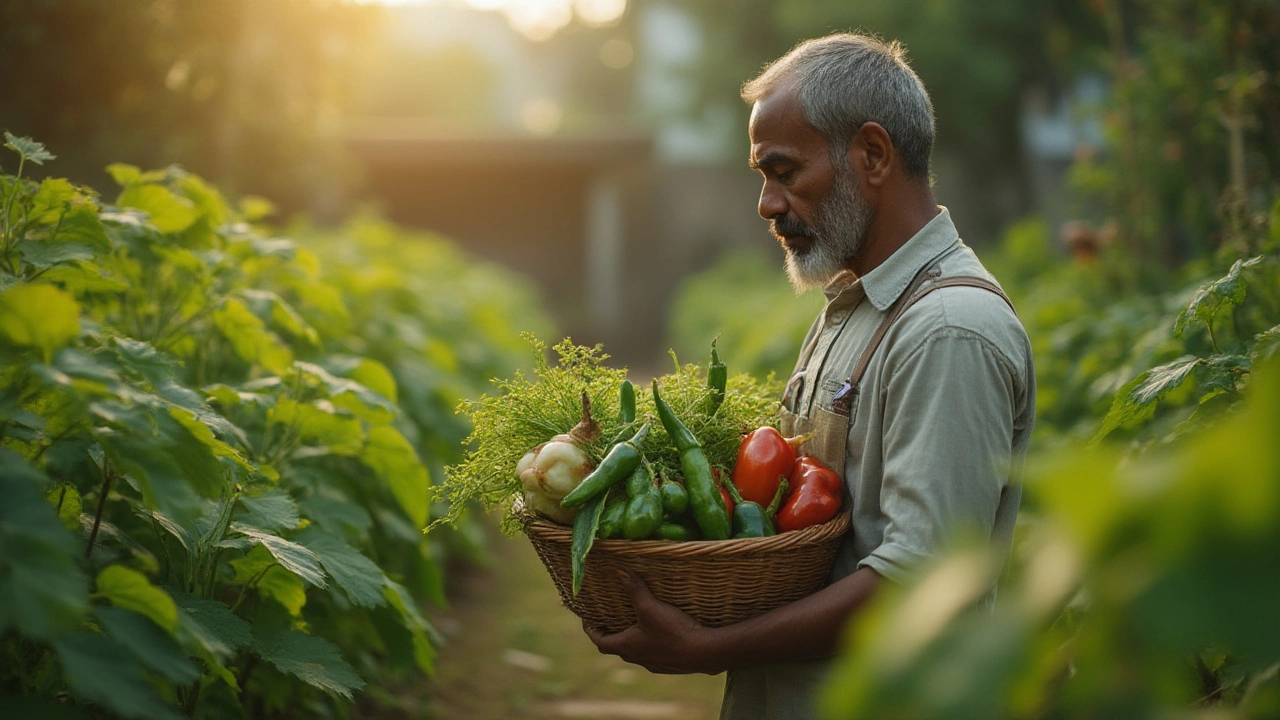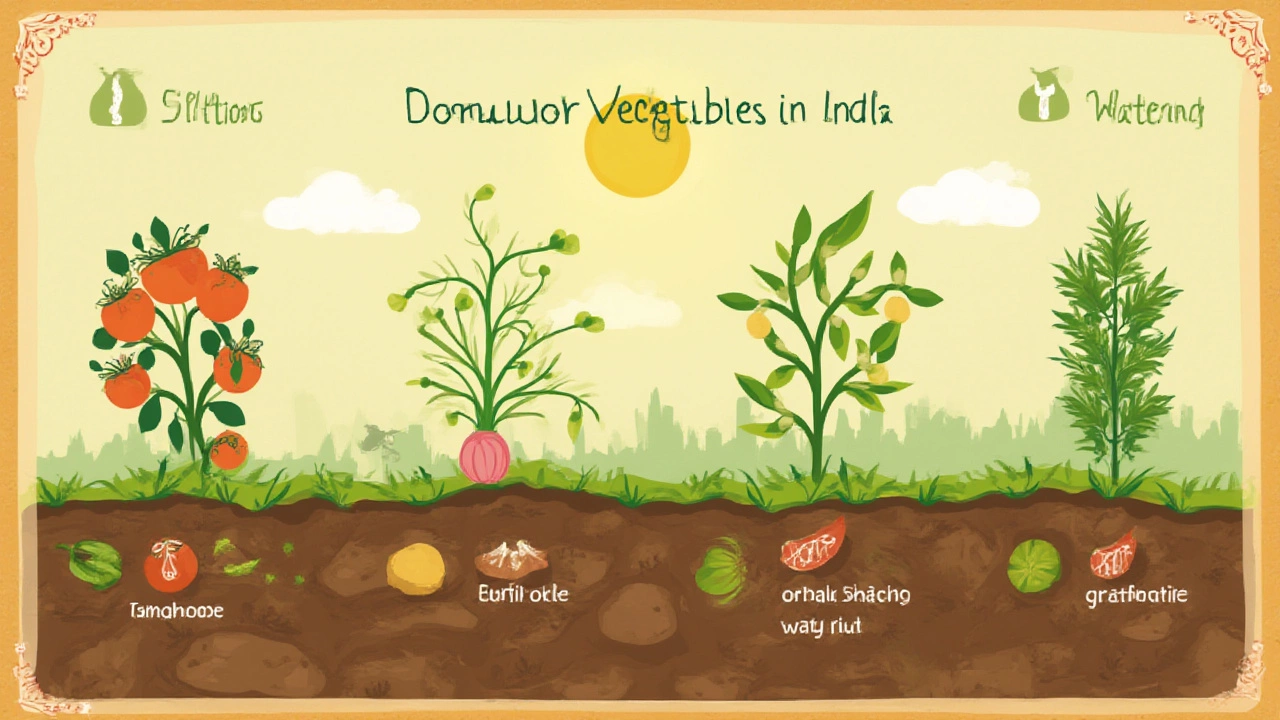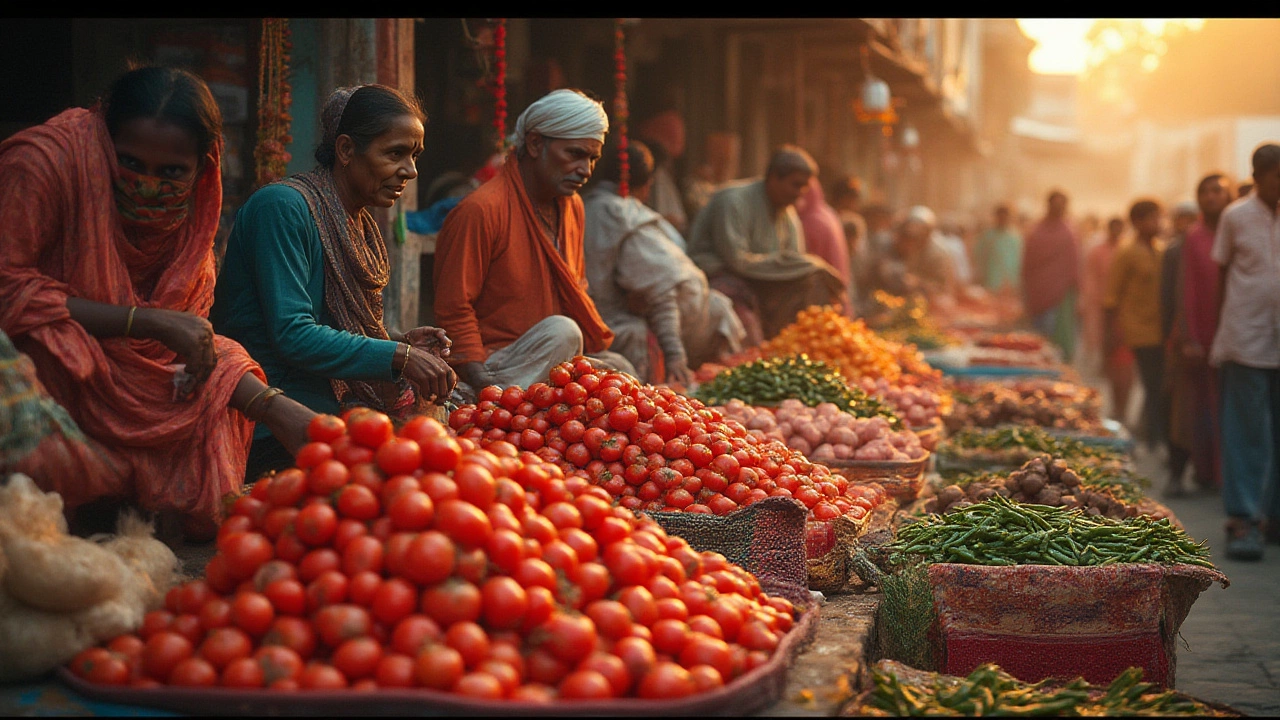Did you know a humble tomato fetches more questions in Indian agri-markets than many exotic fruits? Indians aren’t just obsessed with cricket and Bollywood; they’re pretty serious about their veggies too. And as diets change, cities expand, and weather grows trickier, demand is shifting fast. Today, it’s not just about picking something green off the shelf. From roadside stalls in busy Mumbai streets to shiny supermarket aisles in Bengaluru, everyone’s chasing the freshest, tastiest, and most profitable vegetables. So what are India’s absolute “hot crops” right now?
Understanding India’s High Demand Vegetable Market
Take a stroll across any Indian sabzi mandi and you’ll see a whirlwind of colors, smells, and shouts. Markets move fast, and the vegetables in high demand aren’t just lucky – they’re ruling the dinner plates of millions. In India, the most sought-after vegetables aren’t always the priciest or the rarest, but those that combine familiarity, high yield, resilience to weather, and steady demand all year round.
Tomatoes, onions, and potatoes are absolutely essential. You’d be hard-pressed to find a day these staples don’t appear on a plate across the country. According to the National Horticultural Board, potatoes, tomatoes, and onions make up over half of India’s total vegetable production each year. For reference, see the table below for recent production numbers and price fluctuation trends.
| Vegetable | 2024 Production (Million Tons) | Average Price (₹ / kg, June 2025) |
|---|---|---|
| Tomato | 21.8 | ₹38 |
| Onion | 26.9 | ₹44 |
| Potato | 56.3 | ₹26 |
| Green Chili | 4.1 | ₹76 |
| Cauliflower | 9.2 | ₹33 |
Notice the wild jump in chili prices? That’s not by accident. Sudden heat waves, droughts, and export bans can send prices through the roof. It’s the same with onions; bad weather or hoarding drives panic, and social media memes follow. Tomatoes can be wilder still – one year, prices can crash low, next, there’s a tomato gold rush. This unpredictability makes crop planning a real rollercoaster for growers, but also an opportunity for quick thinkers. So if you’re aiming for profits, you need to keep an eye on weather, news, and even what chefs are showing off on Instagram this season.
But there’s more brewing beneath the surface. Urban diets are getting more varied, and there’s a constant push from health-conscious families for leafy greens like spinach, fenugreek (methi), and even broccoli. Many metropolitan restaurants in Delhi or Pune are snapping up kale, lettuce, and colored bell peppers for salads and fusion food – showing a new trend for gardeners willing to experiment.
Top Vegetables Driving Demand in Indian Markets
Let’s get specific. Tomatoes are the real MVPs right now – no matter the region, from Tamil Nadu to Punjab, someone’s always buying them. They're used in everything: chutneys, curries, salads, and even snacks. Researchers note India devoted about 900,000 hectares to tomato planting in 2024 alone. But it’s not just about bulk. The demand for hybrid and cherry tomatoes is growing as consumers look for flavor, longer shelf life, and fewer pesticides. For gardeners, new disease-resistant and high-yield seeds offer a more reliable crop even if weather gets weird.
Onions? They’re an essential cooking base here, practically the heart of Indian tadka (tempering). When onion prices rise, you’ll hear grumbling from every kitchen. Growers in Maharashtra, Gujarat, and Karnataka have found that storing and timing their harvests can mean the difference between scraping by and making a tidy profit. Cold storage and better transport networks are making onions a “safe bet” crop, but market timing is still everything.
Potatoes hold their own for sheer volume. Northeastern states and states like Uttar Pradesh, West Bengal, and Punjab grow mountains of them. Chips, fries, aloo sabzi, and samosas keep spiraling up demand, while commercial processing plants are absorbing even more of the harvest each year. If you plan your planting right and beat the major harvest rush, there’s good money to be made. A fun stat: India’s potato consumption has been rising at about 5% a year, according to the Indian Council of Agricultural Research.
But let’s not forget seasonal “goldmines” like green peas and okra (ladies’ finger). During the spring and summer, these vegetables can fetch premium prices, especially in cities. Cauliflower and cabbage also see strong sales, with new hybrids keeping yields steady even when rain is scarce. Brinjal (eggplant) stays popular too, especially the purple, long, or round varieties loved in regional cuisines.
Hot tip: If you’re near large towns, fast-growing salad greens and colored peppers command great prices with restaurants and hotel chains. Cherry tomatoes, baby spinach, and fresh herbs are flying off the racks in city stores quicker this year than ever before.

How Growing Regions and Seasons Shape the Demand
India isn’t a one-size-fits-all market. A vegetable that’s a superstar in the North may struggle down South. Geography, climate, festivals, and even migration patterns play their parts. Uttar Pradesh and West Bengal are kingpins for potatoes. Onions, especially for export and wholesale markets, come from Maharashtra and Karnataka. Southern states like Tamil Nadu and Andhra Pradesh are strongholds for tomatoes, but now, greenhouses popping up in the outskirts of metro cities are making these crops year-round.
Timing is half the game. Did you know, monsoon surges can wipe out open field tomatoes, resulting in short-term scarcities and massive price spikes? Clever growers using simple polytunnels or net houses manage to protect crops and cash in big time when the market’s short. Even small home gardeners are using balcony and terrace spaces to grow salad greens off-season; not a bad way to slash grocery bills or earn extra cash with minimal space.
Urban sprawl and better transport mean fresh veggies can travel much farther, much faster now. For example, Bengaluru’s shoppers expect fresh spinach and methi even in May and June, for which suppliers rely on hydroponic and vertical gardening setups that pump out greens on a regular basis. Technology is really changing the game. Apps like BigBasket and Blinkit have started working directly with small farmers, making it easier to deliver fresher produce at the right season – and cutting out some of the middlemen cost along the way.
If you keep an eye on local festivals and wedding seasons too, you’ll notice veggies like cauliflower, carrots, and beans (especially French beans and cluster beans) shoot up in demand in Northern states during the winter months. Meanwhile, Southern states cook piles of brinjal, tomatoes, and cluster beans during summer and early autumn. Region and season make a big impact, so consider your local consumer habits before deciding on your main crop.
Smart Tips for Small Growers to Profit from High Demand Veggies
You don’t need acres to cash in on India’s most wanted vegetables. Even a couple of hundred square feet of garden can make a difference. Here’s how you can tilt the odds in your favor:
- Mix staple crops (like tomato, onion, potato) with 2-3 flexible, high-value veggies that fit your local climate. This spreads your risk if prices crash for a certain crop.
- Pay attention to hybrid, disease-resistant, and quick-growing seeds, especially for tomatoes, beans, and greens. These push yield higher and lower your pesticide costs.
- If you have space, try basic polytunnels or raised beds to stretch growing seasons and avoid the worst weather shocks. Even transparent plastic sheets over a frame can help tomatoes and greens stay protected from heavy monsoon or scorching sun and keep them market-ready.
- For urban gardeners, focus on fast, repeat harvest crops like baby spinach, coriander, mint, and lettuce. You can plant, snip, and regrow these several times, giving small but steady earnings or kitchen supplies every month.
- Check local farm-to-home startups or online grocery services. Many will buy fresh produce locally if you contact them early enough in the season, especially for niche items like fancy greens and cherry tomatoes.
- Experiment with succession planting – stagger your sowing every 2-3 weeks. This means when everyone else harvests one big haul, you’ll still have crops coming in exactly when prices move up due to shortages.
One golden nugget no one tells you: connect with chefs or small restaurants nearby. They often pay a premium for fresh, pesticide-free produce and might even want rare or specialty crops, such as organic tomatoes or purple carrots. Social media promotion can help – show off your clean, healthy produce and tap into the trend of local, sustainable eating.

The Future of High Demand Vegetables in India
India’s love for veggies isn’t cooling down any time soon. According to experts and industry stats, demand is only going up as cities grow and health awareness gets stronger. But the mix of vegetables is getting a twist every year. While tomatoes, onions, and potatoes own the giant share, the next few years could see greens, mushrooms, and colored bell peppers move up the ranks – driven by millennials, health fads, and social trends.
Don’t be shocked if you start seeing rooftop kale and hydroponic lettuce appear more in local stores. The push for cleaner, pesticide-reduced, and “exotic” veggies is finally taking root outside top metro cities too – from Jaipur to Kochi. Small growers who stay alert to these trends and are ready to tweak crops each season can earn good profits with just a bit of flexibility.
Of course, prices will keep jumping up and down – thanks to unpredictable weather and changing export rules. That’s why the real winners in this market keep an ear to the ground, plant a clever mix, and move fast when opportunity opens up. So, if you’re planning your vegetable patch to cash in on high demand vegetables India, watch your local trends, and don’t be afraid to try something new every season. Who knows – the next super-profitable crop might just be waiting for you a seed packet away.

